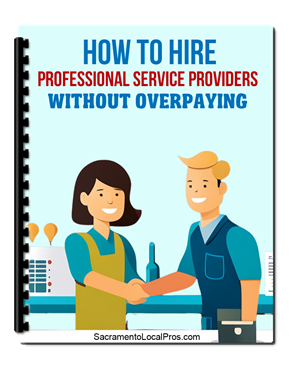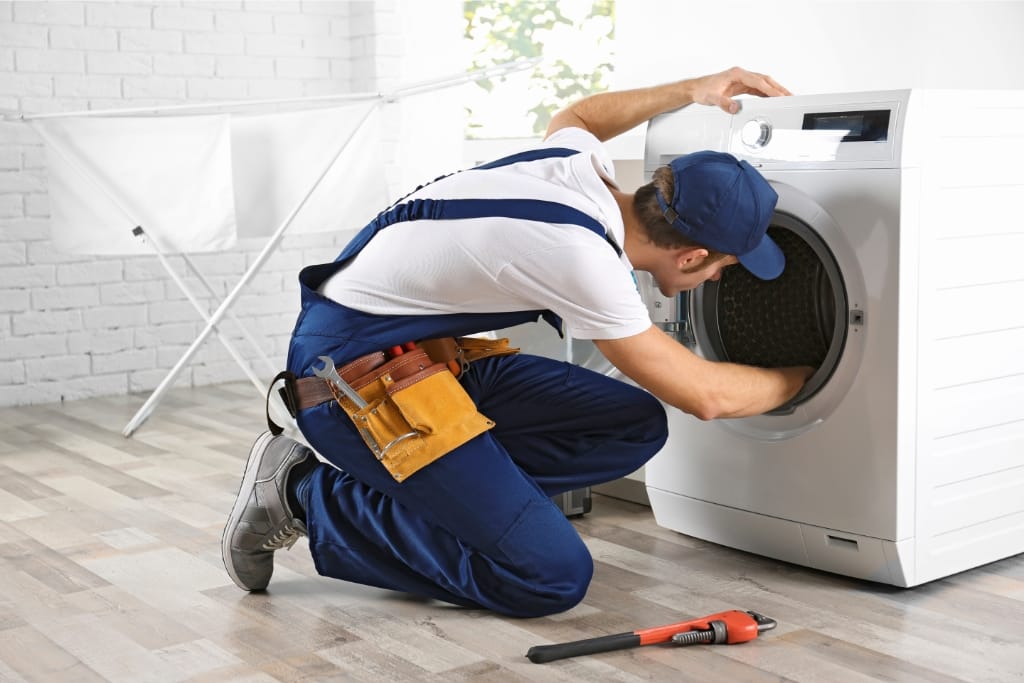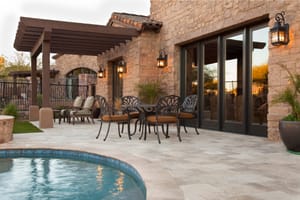Buying your first home feels like crossing the finish line of a marathon. You've saved for the down payment, secured financing, and navigated the competitive housing market.
But here's what many first-time buyers don't realize: the purchase price is just the beginning of your financial journey as a homeowner.
Beyond your monthly mortgage payment, homeownership comes with a constellation of ongoing expenses that can catch new buyers off guard.
These hidden costs can add thousands of dollars to your annual housing budget, making the difference between financial comfort and constant stress.
Smart homebuyers understand that preparing for these expenses isn't about pessimism—it's about realistic planning.
When you know what to expect, you can budget appropriately and avoid the financial surprises that derail many new homeowners' budgets.
Let's explore the hidden costs that every prospective homeowner should factor into their long-term financial planning.
1)) Property Taxes That Keep Rising
Property taxes represent one of the most significant ongoing homeownership costs, yet many buyers underestimate their long-term impact.
These taxes fund local schools, infrastructure, and municipal services, making them essential but unavoidable.
What makes property taxes particularly challenging is their tendency to increase over time.
As your home's assessed value rises or local municipalities need additional revenue, your tax bill grows accordingly. A home with $3,000 in annual property taxes today might cost $4,500 in taxes within a decade.
Research your local tax rates thoroughly before purchasing. Some areas reassess properties frequently, while others maintain more stable tax environments.
Factor in potential increases when calculating your long-term affordability.
2)) Homeowner's Insurance Beyond The Basics
Your mortgage lender requires homeowner's insurance, but the basic coverage they mandate might not fully protect your investment.
Standard policies often exclude flood damage, earthquake coverage, and protection for high-value personal items.
Insurance costs vary dramatically based on location, home age, and construction materials.
Homes in hurricane-prone areas or regions with frequent natural disasters face significantly higher premiums.
Older homes with outdated electrical or plumbing systems often cost more to insure.
Consider umbrella policies for additional liability protection, especially if you have significant assets to protect.
These policies provide extra coverage beyond your standard homeowner's insurance limits.
3)) Maintenance That Never Stops
Homeownership means becoming responsible for every system, surface, and structure on your property.
Unlike renting, where landlords handle repairs, homeowners must maintain everything from roof shingles to water heater elements.
Budget approximately 1-3% of your home's value annually for maintenance costs.
A $300,000 home might require $3,000-$9,000 in annual maintenance expenses.
This includes routine tasks like HVAC servicing, gutter cleaning, and exterior touch-up painting.
Create a maintenance schedule to spread costs throughout the year. Regular upkeep prevents minor issues from becoming major expenses, ultimately saving money while preserving your home's value.
4)) Utility Costs That Fluctuate
Homeowners typically pay significantly more for utilities than renters, especially in larger homes with multiple rooms to heat and cool.
Your monthly utility bills will include electricity, natural gas, water, sewer, and trash services.
Energy costs vary seasonally, with summer cooling and winter heating driving the highest bills.
Older homes often have poor insulation or inefficient systems that increase energy consumption.
A home built in the 1980s might cost twice as much to heat and cool as a newer, energy-efficient construction.
Research average utility costs for homes in your target area. Ask sellers for recent utility bills to understand typical monthly expenses throughout the year.
5)) HOA Fees And Special Assessments
Homeowner Association (HOA) fees support community amenities and maintenance in planned developments, condominiums, and many suburban neighborhoods.
These monthly or annual fees cover landscaping, common area maintenance, and sometimes utilities like water or trash collection.
HOA fees rarely decrease and often increase annually to cover rising maintenance costs and infrastructure improvements.
A community with $150 monthly HOA fees today might charge $200 within five years.
Special assessments present additional financial challenges. When major repairs or improvements exceed the HOA's reserves, they levy special assessments on all homeowners.
These one-time charges can range from hundreds to thousands of dollars, with little advance notice.
6)) Lawn Care And Landscaping
Maintaining attractive outdoor spaces requires ongoing investment in equipment, supplies, and potentially professional services.
Even basic lawn care involves purchasing a mower, fertilizer, weed control products, and seasonal maintenance supplies.
Professional landscaping services cost $100-$300 monthly for basic maintenance in most areas.
Homes with extensive landscaping, large lawns, or specialty features like pools or irrigation systems face higher ongoing costs.
Consider the time investment as well. Maintaining your lawn requires several hours weekly during the growing season, plus additional time for seasonal tasks like leaf removal and garden preparation.
7)) Home Security Systems
Protecting your investment often requires security systems, especially in areas with higher crime rates or for homes with valuable contents.
Basic security systems cost $20-$50 monthly, while comprehensive systems with professional monitoring range from $50-$100 monthly.
Smart home security features like cameras, automated lighting, and remote monitoring increase both upfront costs and ongoing subscription fees.
However, many insurance companies offer discounts for homes with security systems, partially offsetting these expenses.
8)) Pest Control Services
Regular pest control prevents infestations that can damage your home's structure and create health hazards.
Monthly or quarterly pest control services typically cost $300-$600 annually, depending on your location and the types of pests common in your area.
Termite protection deserves special consideration, as these insects can cause thousands of dollars in structural damage.
Annual termite inspections and treatment bonds cost $200-$500 annually but provide essential protection for your investment.
9)) Water Heater Replacement And Repairs
Water heaters typically last 8-12 years, making replacement an inevitable expense for most homeowners.
A new water heater installation costs $1,200-$3,000, depending on capacity and fuel type.
Tankless water heaters offer energy efficiency but require higher upfront investments.
Consider your household's hot water usage patterns and long-term energy costs when selecting replacement units.
10)) HVAC System Maintenance
Heating and cooling systems require regular maintenance to operate efficiently and last their expected lifespan.
Annual HVAC maintenance costs $150-$300 but prevents costly breakdowns and extends system life.
Complete HVAC system replacement represents one of the largest homeownership expenses, typically costing $5,000-$15,000.
Systems generally last 15-20 years, making replacement planning essential for long-term homeowners.
11)) Appliance Replacement Cycles
Major appliances like refrigerators, washers, dryers, and dishwashers eventually require replacement.
These appliances rarely fail simultaneously, but their replacement cycles create ongoing expenses throughout your homeownership journey.
Budget $500-$1,500 annually for appliance maintenance and eventual replacement.
Energy-efficient models cost more upfront but offer lower operating costs over their lifespan.
12)) Roof Maintenance And Replacement
Roofing systems protect your entire home investment, making their maintenance crucial for preventing water damage and structural issues.
Minor roof repairs cost $300-$800, while complete roof replacement ranges from $8,000-$20,000.
Roof lifespans vary by material, with asphalt shingles lasting 20-25 years and metal roofing lasting 40-50 years.
Regular inspections and prompt repairs extend roof life and prevent expensive interior damage.
13)) Plumbing Updates And Repairs
Plumbing systems develop leaks, clogs, and component failures over time. Minor plumbing repairs cost $150-$500, while major issues like sewer line replacement can cost $3,000-$8,000.
Older homes often require plumbing updates to meet current codes and improve efficiency.
Replacing galvanized pipes or updating electrical systems represents significant investments, but improves home value and functionality.
14)) Electrical System Upgrades
Electrical systems in older homes may require updates to handle modern appliance loads and meet current safety codes.
Electrical panel upgrades cost $1,500-$3,000, while whole-house rewiring can cost $8,000-$15,000.
Ground Fault Circuit Interrupter (GFCI) outlets, smoke detectors, and surge protection systems provide safety improvements that add ongoing maintenance costs but protect your family and belongings.
15)) Emergency Fund For Unexpected Repairs
Even with careful planning, homeownership brings unexpected expenses. Water damage from burst pipes, storm damage, or major appliance failures can create immediate financial demands.
Maintain an emergency fund equal to 3-6 months of housing expenses, including mortgage payments, taxes, insurance, and utilities.
This fund provides financial security when major repairs or replacements become necessary.
Conclusion
Successful homeownership requires comprehensive financial planning that extends far beyond your monthly mortgage payment.
These hidden costs can add 25-50% to your total housing expenses, transforming an affordable mortgage into a financial burden.
Start by calculating your area's specific costs for property taxes, insurance, and utilities.
Research HOA fees and special assessment history for properties you're considering.
Factor in your personal preferences for maintenance—some homeowners prefer DIY approaches while others budget for professional services.
Create separate savings accounts for different homeownership expenses. Automate monthly transfers to build reserves for maintenance, repairs, and eventual replacements.
This approach prevents financial surprises and ensures you can maintain your home properly throughout your ownership period.
Homeownership remains one of the best long-term wealth-building strategies for most families.
These additional costs represent investments in your property's value and your family's comfort and security.
With proper planning and realistic budgeting, you can enjoy the benefits of homeownership while avoiding the financial stress that catches unprepared buyers off guard.
Are You Looking For The Best Real Estate Companies In Sacramento Ca? Click Here To Get In Touch With Top Real Estate Agents Today!
Download Our Free E-book!








